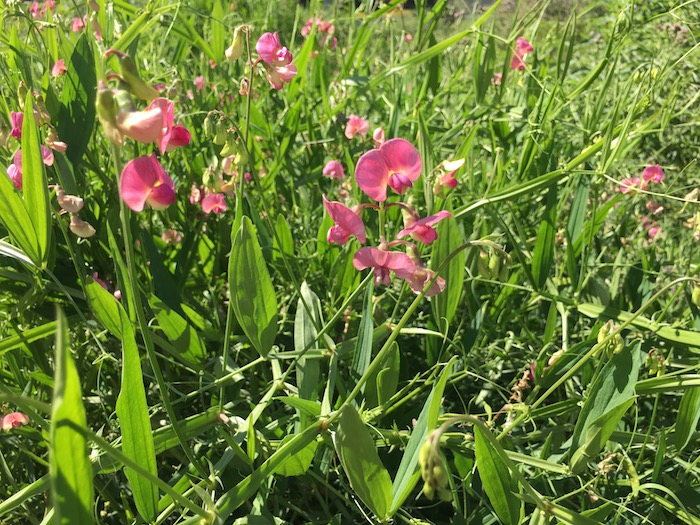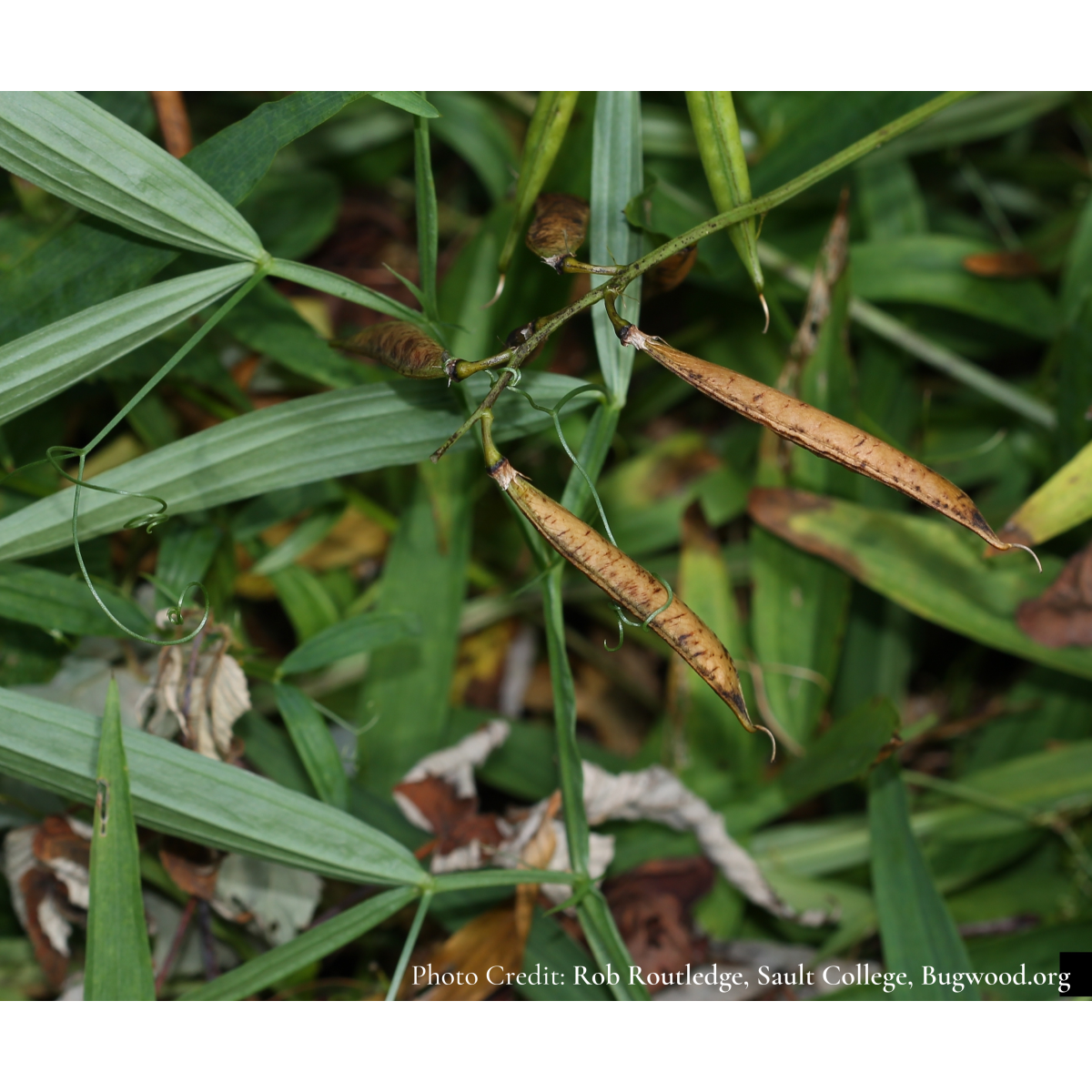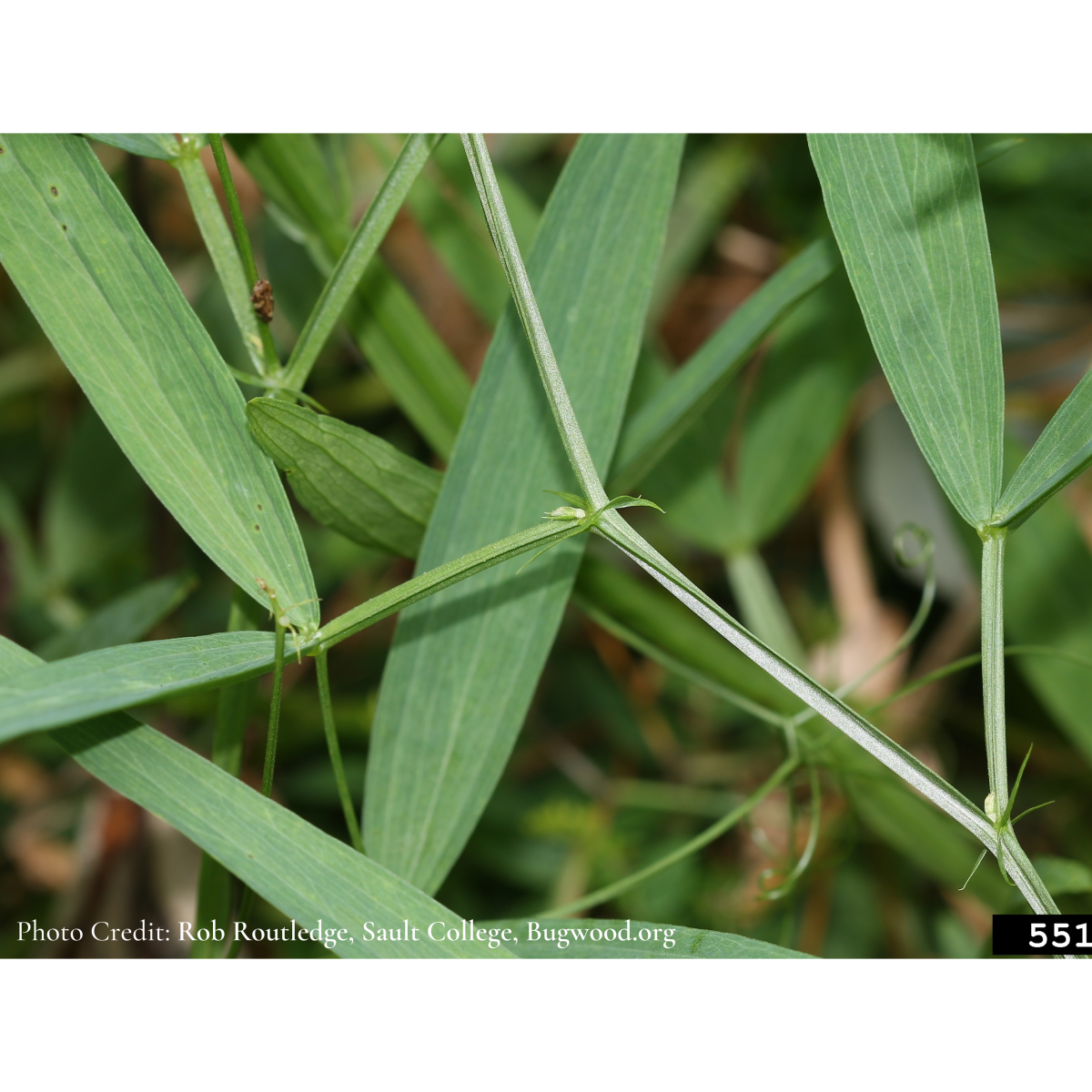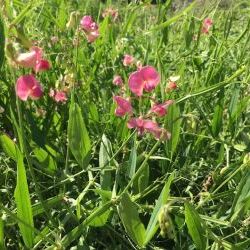
Priority: Prevent
General: This is one species of 4 Lathyrus species known in BC. It is a perennial vine that can climb using tendrils.
Height: The vine can grow up to 7 feet long.
Flowers: Flowers grow in clusters of 5 – 15 blooms and can be red, white, or pink. Flowers are typical of the pea family with distinct wing-like shape & single seed pod protruding from the center. The seeds look like edible pea pods.
Leaves/Stems: The leaves are 3 inches long and 1 inch in width and are smooth.
Root: Rhizomatous, deep with a broad horizontal scope.
Flat Vetchling
Narrow-leaved Pea
Wood Pea
Perennial Pea
Narrow-leaved Everlasting Pea
Marsh Peavine (Lathyrus palustris), native. This peavine grows in moister habitats like mudflats, lakesides, and marshes. Flowers are pink to bluish-purple. Leaves are broad and dark green.
Broad Leaved Peavine (Lathyrus latifolius), invasive. Broad-leaved peavine has larger seedpods & larger leaves.
Where did it come from? Native to Europe. It was introduced as a garden ornamental.
Where does it grow here? Flat Peavine prefers dry soil and can tolerate partial to full sun. It thrives on disturbed sites and becomes dense especially along roadsides.
Reproduction: By seed & rhizome.
When does it grow, flower & seed? It flowers between June and October.
Spreads By: It spreads primarily by roots. It can die back each winter and grow from the roots. Seed pods twist off and eject the seeds up to 10 meters away. It is still sold in “naturalized” garden seed mixes & can be introduced by boots, tools, vehicles, and mowing.
Plant Type: Perennial vine.
- Peavine will become the main species along roadsides outcompeting all other vegetation.
- It will also climb shrubs and trees.
- The fruit and leaves contain a toxic amino acid that if ingested in large amounts can cause a disease called Laythyrism. It causes stiffness, weakness and no muscle control. Horses and humans are most susceptible as compared to ruminants like cattle or sheep.
- Review your property regularly for this species.
- Treatment Manual control like digging, mowing and cutting can be challenging for control because this species reproduces from underground roots. Mowing will likely spread the plants to new locations. Small infestations can be manually treated if all of the root matter is also removed. It is likely that several treatments of this kind will be necessary.
- Cover bare patches or disturbed soil by planting or seeding with non-invasives.
- Check areas where you have removed invasives for any new plants that year and in future growing seasons.
- Dispose of invasive plants responsibly. Bag them for disposal at the local landfill. Composting and burning are not recommended.
- Contact LRISS for specific treatment recommendations.
Jefferson County Noxious Weed Control Program. Best Management Practices: Everlasting Peavine, Flat Pea. www.co.jefferson.wa.us/WeedBoard. 360-379-5610 ext 205.
Sea to Sky Invasive Species Council website.
Photo Gallery


